Over 1600 species of flowering plants live in the Great Smoky Mountains National Park which is why it's sometimes called the “Wildflower National Park.” With the spring season approaching, what could be better than a weekend getaway to see one of the world's most mesmerizing floral regions in all its full bloom splendor. Each spring, the Park hosts the Spring Wildflower Pilgrimage, which is a week-long festival full of programs and guided hikes exploring the wondrous diversity of plant life found in the park. Discover everything you need to know about the Great Smoky Mountains most iconic and rare wildflowers coloring Gatlinburg this season, plus tips on which trails are best to hike, what time of year they bloom and how best to spot them.
Please keep in mind to help keep these magnificent wildflowers thriving, please be sure to stay on the trail. Do not walk through vegetation and please DO NOT PICK the wildflowers. Remember, take only pictures and leave only footprints. Learn about the threats facing wildflowers and how you can do your part to protect them.
 Spring Blooms by Month
Spring Blooms by Month
MARCH
Bloodroot, Jack-in-the-pulpit, Sharp-lobed hepatica, Spring beauty, Trout-lily and Violets.
APRIL
Dutchman's Breeches, Fire Pink, Foam Flower, Large-flowered Bellwort, Little Brown Jugs, Purple Phacelia, Squirrel Corn, Trout-Lily, Violets, White Fringed Phacelia, White Trillium, Wild Geranium, Wild Ginger, Wood Anemone and Yellow Trillium.
MAY
Yellow Lady's Slippers, Bleeding Heart, Blue Phlox, May Apple, Mountain Laurel and Flame Azaleas.
JUNE
Catawba Rhododendron (primarily above elevations of 3500 feet), Flame Azaleas at higher elevations, Indian Pink, Mountain Laurel at higher elevations, Mountain Spiderwort, Rattlesnake Hawkweed, Rosebay rhododendron, Speckled Wood Lily, Sundrops, Squawroot, Wood Sorrel, Woodland bluets and Yellow Star Grass.
Popular and Rare Wildflowers

Lady Slippers
The expanded pocket or "slipper" and spiraled browned petals of this lovely orchid are unmistakable. The colors of these blossoms are almost always pink or bright yellow, with purple veins and lateral petals that vary from greenish-yellow to purplish-brown. Found typically in wet woods, shady swamps and untouched woodlands these wildflowers are rare and truly beautiful to behold in person for those that are lucky to find them. Gorgeous as these blossoms may be, it's important to remember to leave them undisrupted.
Suggested Trails: Mum's the word on this one! In order to protect this endangered plant species, hikers and nature-enthusiasts keep the location of these beauties well under wraps.
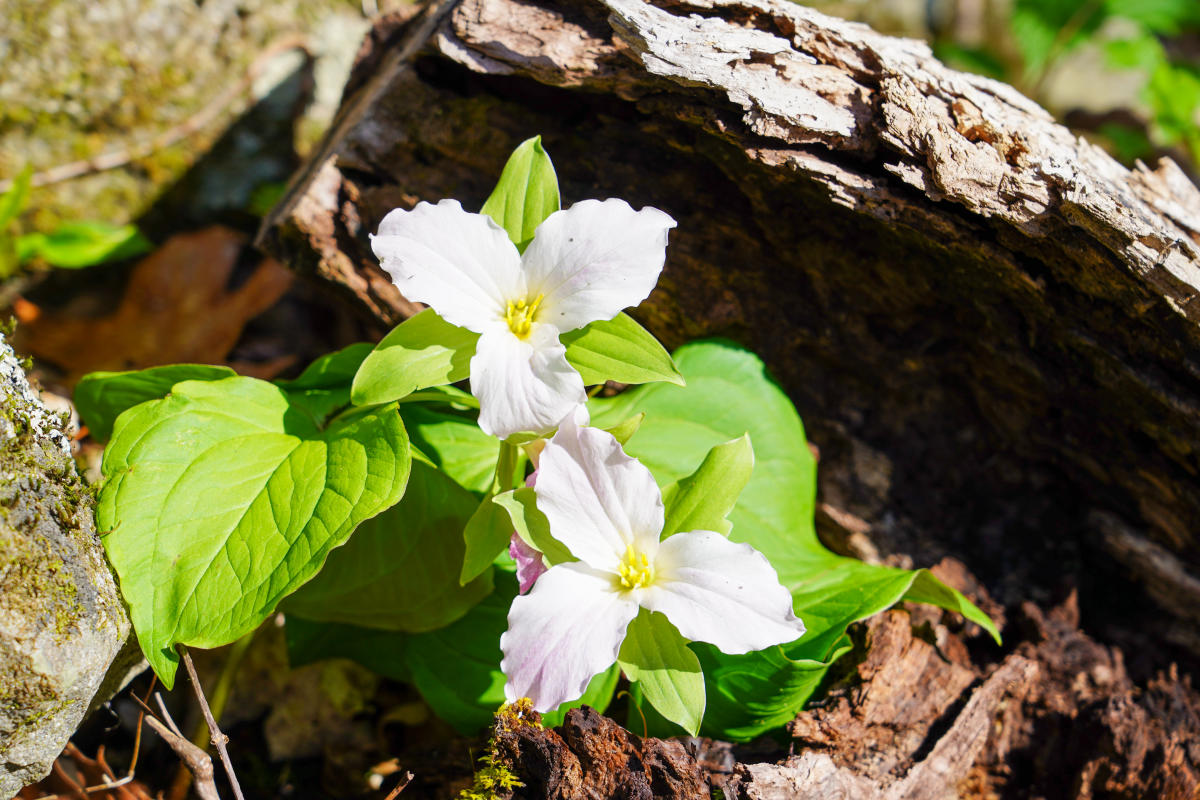 White Trillium
White Trillium
The iconic White Trillium is known to be a spring showstopper, with large bell-shaped flower petals, and three white leaves around a yellow center. The white leaves turn pink with age. White trillium is commonly seen in the mid to low elevations of the park.
Suggested Trails: Huskey Gap, Chestnut Top, Porters Creek and roadside along Newfound Gap Road
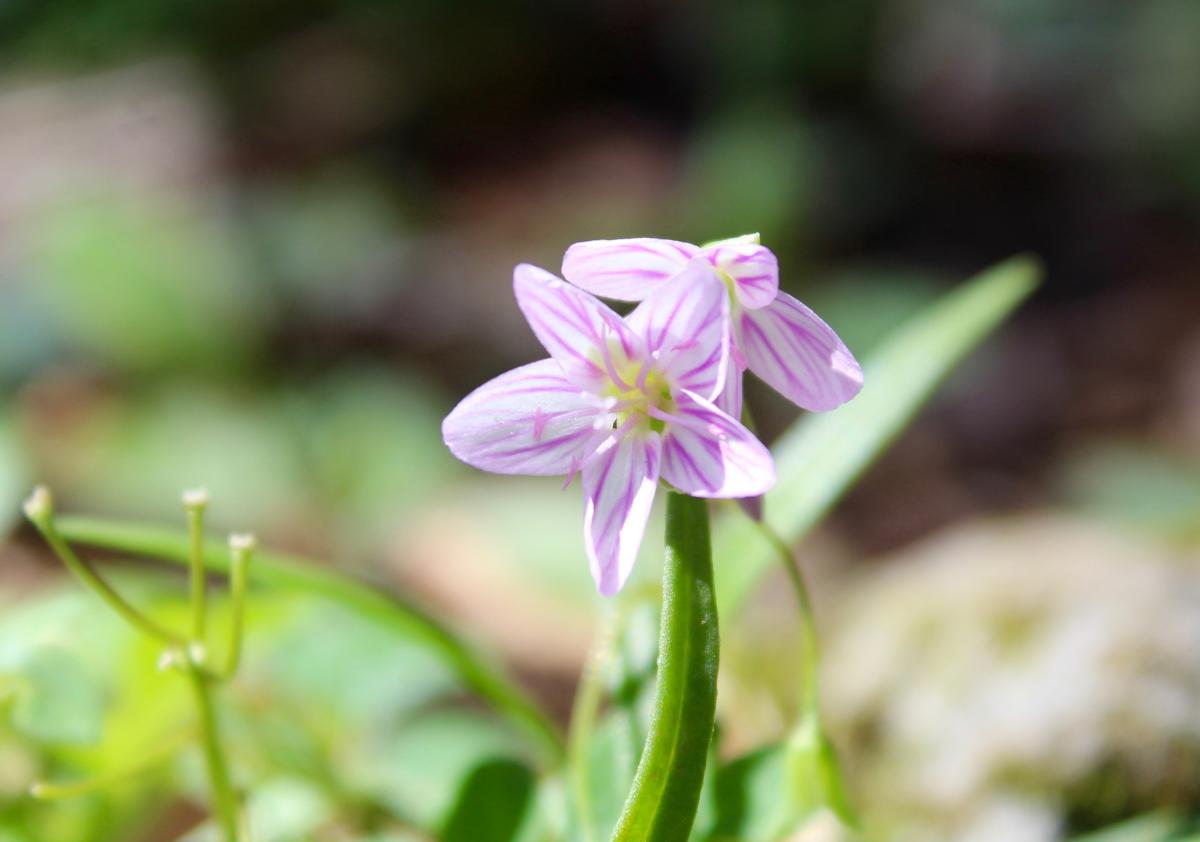 Spring Beauty
Spring Beauty
The Spring Beauty is an early bloomer. It is easily identified by its unique pink-striped petals that bloom either white or pale pink. This blossom ranges from 3 to 4 inches tall, and has a pair of oval, dark green leaves that travel halfway up the stem. Spring beauty is commonly seen over a wide range of the park.
Suggested Trails: Porters Creek Trail, Chestnut Top
 Yellow Trillium
Yellow Trillium
Yellow trillium has a single yellow flower with narrow and erect petals. It has three leaves, three petals, and three sepals. It is frequently seen in the lower elevations of the park.
Suggested Trails: Gatlinburg Trail, Little River Trail, Huskey Gap, Chestnut Top and roadside along Newfound Gap Road
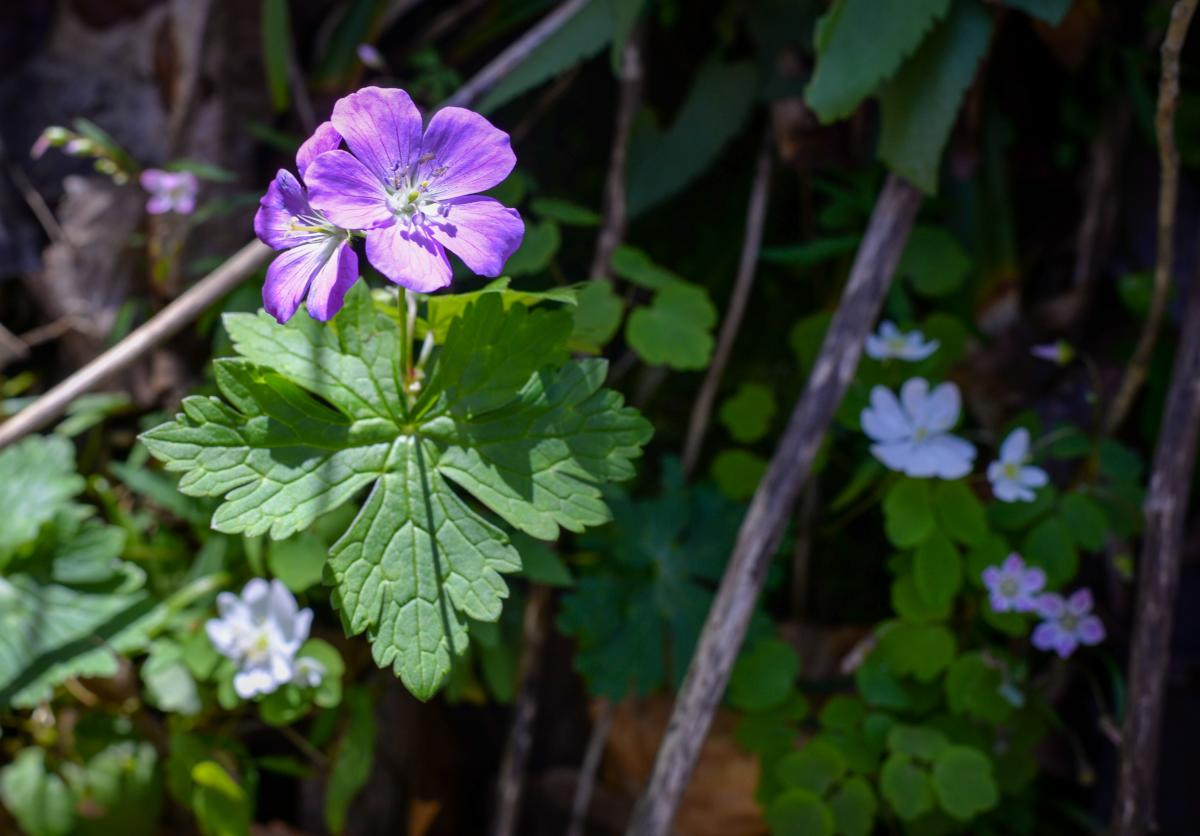 Wild Geranium
Wild Geranium
Wild geranium has 5 petals on each blossom that stand 12 to 18 inches and are bright pink and purple. Wild geranium is commonly found in the mid to low elevations of the park.
Suggested Trails: Walker Sisters Trail, Kephart Prong Trail
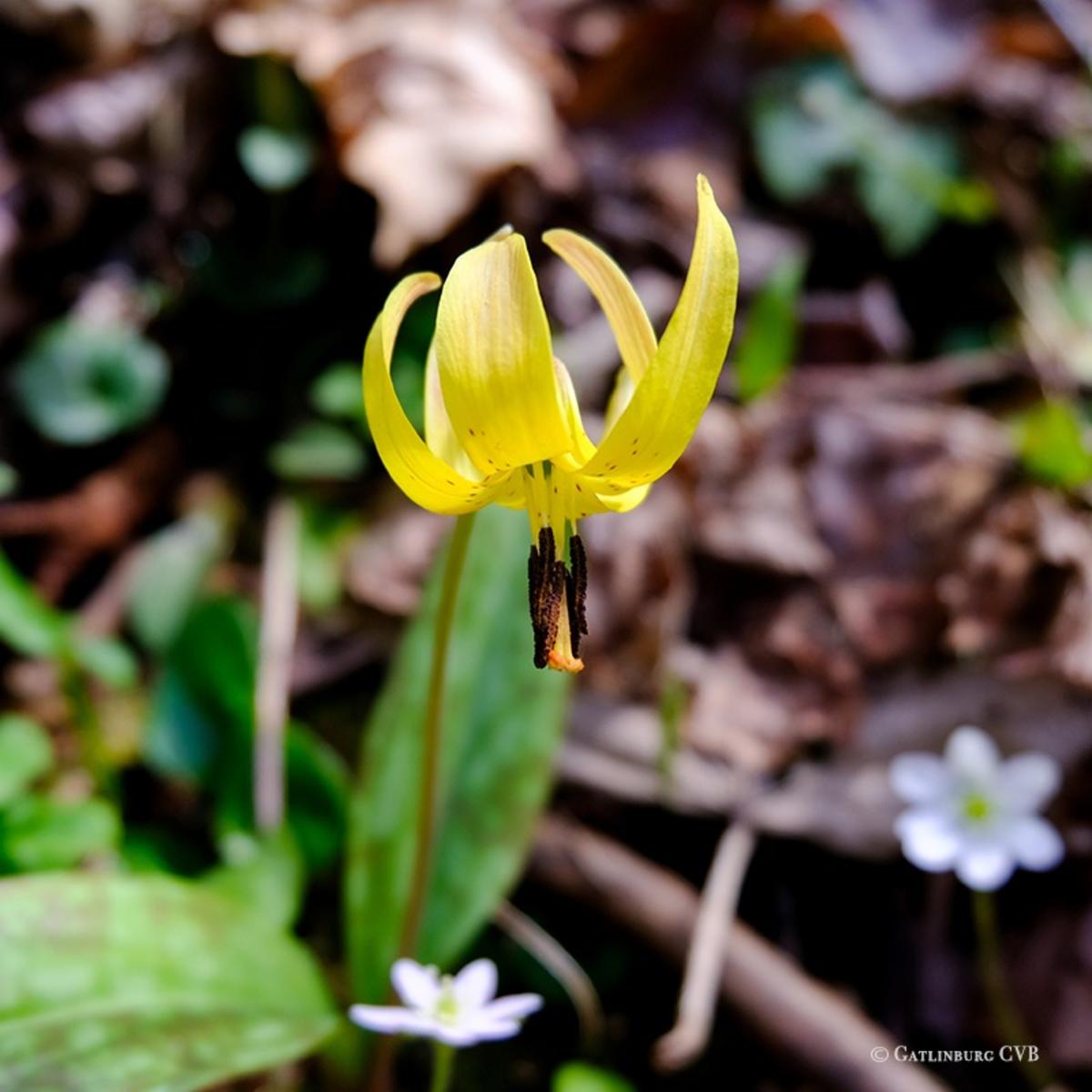
Trout Lilly
The Cherokee Indians believed that when the trout lily bloomed it was time to fish. The leaves look like brook trout with spots or blotches on them. The trout-lily is 6 to 8 inches tall and is a yellow, solitary drooping flower. Trout-lily is commonly seen throughout the park.
Suggested Trails: Porters Creek Trail, Cove Hardwood Self-Guided Nature Trail
 Thyme- Leaved Bluets
Thyme- Leaved Bluets
Thyme-leaved bluets are a late spring wildflower. They are tiny flowers with four blue petals surrounding a central yellow spot. Often, the flowers are seen in a group. Thyme-leaved bluets are commonly seen throughout the park.
Suggested Trails: Kephart Prong Trail
 Bloodroot
Bloodroot
Bloodroot is an early spring wildflower. It has many narrow white petals surround a center of gold stamens. It also has veiny and deep-lobed leaves. The roots contain an orange-red sap, which gives the flower its name. Bloodroot if frequently seen in the low elevations of the park.
Suggested Trails: Cove Hardwood Self-Guided Nature Trail, Porters Creek, Chestnut Top
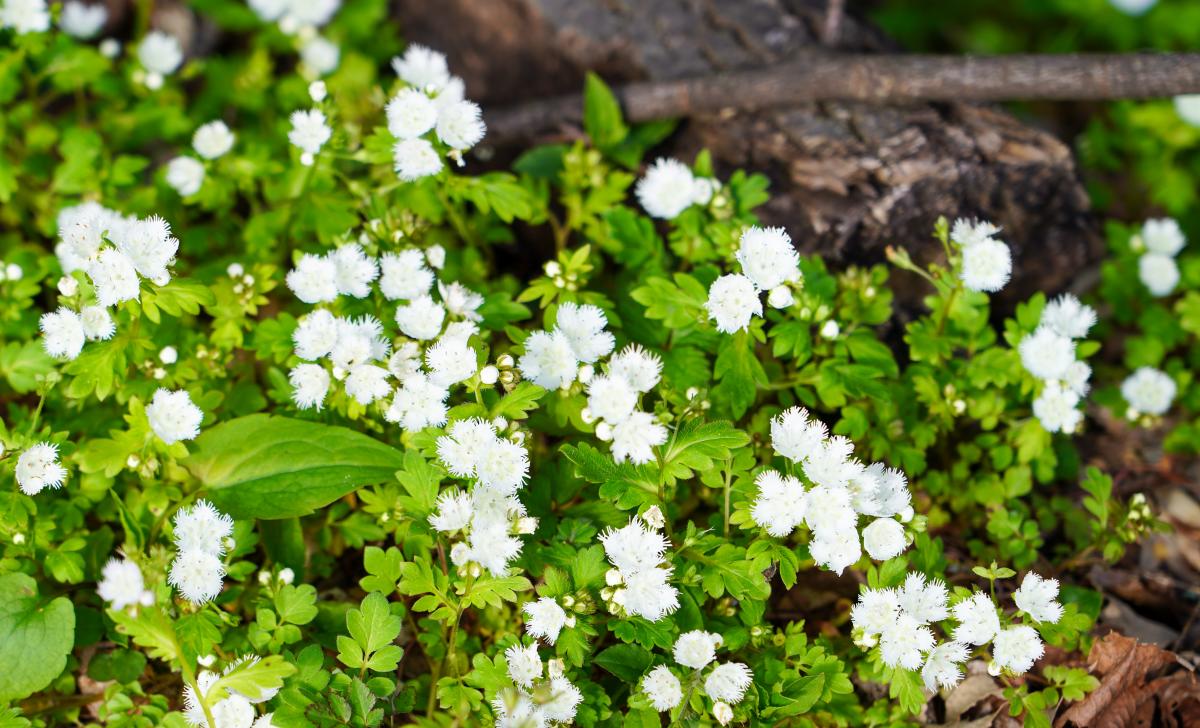 White Fringed Phacelia
White Fringed Phacelia
Growing in large colonies throughout the park, this delicate wildflower can make the forest floor look as if it is blanketed in snow. Each individual flower on the White Fringed Phacelia has five white petals that resemble a cup-shaped wildflower. The petals typically turn purple with age. White fringed phacelia is commonly seen in the mid to high elevations of the park.
Suggested Trails: Porters Creek Trail and Cove Hardwood Self-Guided Nature Trail
 Dutchman's Breeches
Dutchman's Breeches
Aptly named for its two hollow spurs resembling a pair of pantaloons, the Dutchman's Breeches is a charming little blossom that can be easily found throughout the park. It is characterized as a white, nodding flower on a leafless stalk that hangs over dissected leaves. It is often confused with squirrel corn (Dicentra canadensis) which blooms at the same time in the same habitat.
Suggested Trails: Cosby Nature Trail, Porters Creek and Deep Creek

